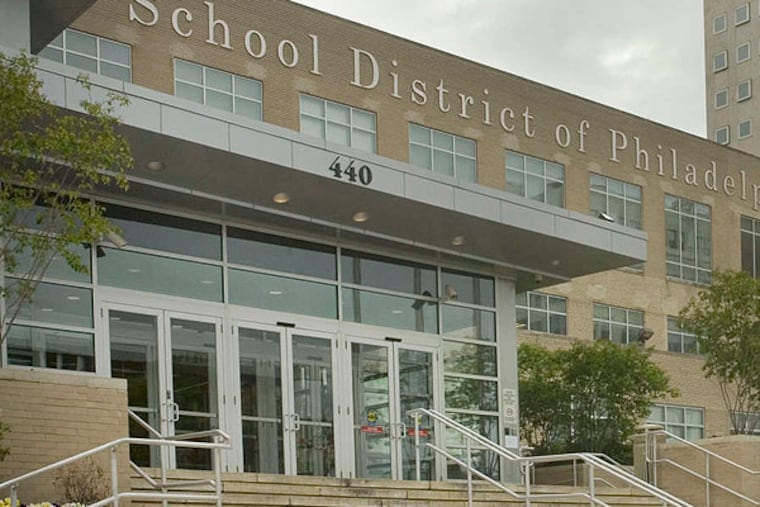Philly schools counting on an extra $264 million next year
The Philadelphia School District is projecting a budget of $2.9 billion next year - a forecast that banks on $264 million in new city and state money that is not assured.

The Philadelphia School District is projecting a budget of $2.9 billion next year - a forecast that banks on $264 million in new city and state money that is not assured.
The School Reform Commission unanimously adopted a "lump sum" financial statement Thursday that would pump more money into city classrooms rocked in recent years by cuts. It would represent a 10 percent increase over last year's spending plan.
But the plan relies on $159 million in new money from the state and $105 million from the city, sums proposed by Gov. Wolf and Mayor Nutter, respectively, but that would have to be approved by skeptical lawmakers.
Without the new city and state money, the district would face an $85 million deficit, due largely to fixed costs such as charter-school payments, pensions, and health-care costs rising faster than revenues.
Chief financial officer Matthew Stanski said before Thursday's meeting that the district was aiming high. "Our target is not to balance the budget - our target is to get to $264 million in new revenue," Stanski said. "We desperately need it. The status quo is just not adequate for our students."
Additional dollars are crucial to the execution of Superintendent William R. Hite Jr.'s blueprint for moving schools forward after several years of deficits and inadequate school resources, officials said.
The bulk of the additional funds - about 75 percent - would be sent directly to schools, with principals making the call on how they would use the money, such as hiring nurses and counselors, or on art and music programs, tutoring, Advanced Placement classes, or more teacher training.
Principals are sketching out their 2015-16 budgets based on this year's level of resources, which Stanski termed "inadequate."
They also are being asked to set priorities for what they would do with new money if it is approved, he said.
Money with risks
The new city and state money would be a boon to the district, and officials are grateful for it, but Stanski also noted that it comes with risks.
In Pennsylvania, payments to charter schools are based on the prior year's per-student district cost, so if the district boosts its spending considerably in 2015-16, it would be required to increase its charter spending the following year.
Without state-level charter relief, the district would send $96 million more for the same number of students in charter schools in 2016-17, Stanski said. That would represent a "really big structural problem" down the line, he told the SRC.
Still, officials said they were pleased to finally be discussing a budget that allows for new investments in classrooms after several years of cuts. The district is projecting a small surplus - about $7 million - for the end of the current school year.
A first step
The lump-sum adoption is the first step in a long budget process that culminates in final adoption of a spending plan, currently scheduled for May 28.
SRC Chairwoman Marjorie Neff said that the additional resources were crucial to classrooms and that she and the other members of the commission would fight for them. But they couldn't do so alone.
"It will require the efforts of students, teachers, families, school staff, and community members," she said.
The SRC also signed off on several bond transactions Thursday.
It took advantage of low market rates to refinance some existing bonds, key to a district with a high debt load - about 10 percent of the school system's budget is spent on debt service.
The refinancing saves the district $3.3 million annually.
The SRC also approved selling about $50 million in new bonds, mostly to pay for new information technology and purchase new school buses. The annual cost to the district for the new bonds is about $3.7 million, Stanski said.